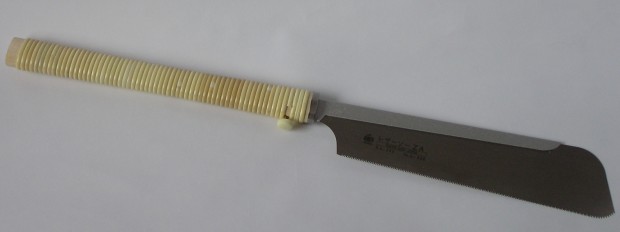When I first started dabbling in woodworking at the age of 15, the only tool I used to cut wood was an old, rusted woodsaw. Every cut would start straight and true, but as I’d push the saw deeper into the wood, it would buckle and warp, my arms would get tired, and the cut would stray from the line. A few years ago I learned about pull saws and once I started using them I have stuck with pull saws for all my manual wood-cutting tasks.
Pull saws have been said to have originated in Japan more than 2,000 years ago. The main difference between pull saws and ‘Western’ saws is that pull saws cut on the backstroke. That is, they cut when you pull the saw against the wood, not when you push the saw against the wood (as in the case of Western saws). Whereas a Western saw is being compressed when it’s cutting, a pull saw is put under tension (a pulling force). This means that the pull saw can be a lot thinner than a ‘push’ saw, because it doesn’t need to be as rigid to overcome the compression forces. This thinness in turn means that its kerf, the thickness of the cut, is a lot smaller than that of the Western saw. And because it’s thinner, it requires less force to cut through the wood, and cuts faster.
You don’t have to buy an expensive hand-crafted Japanese pull saw to start using this tool. Popular home improvement stores like Menard’s and Home Depot sell low priced pull saws that work very well. I’ve bought a couple over the past two or three years and they have served me well as the only saws I use.
References:
- Larry Eisinger’s Home Repair Workshop
-
Japanese Saw - Wikipedia Licenses:
-
The image of the pull saw is from the Japanese Saw page on Wikipedia and is licensed under the under the Creative Commons Attribution ShareAlike 3.0 License.
